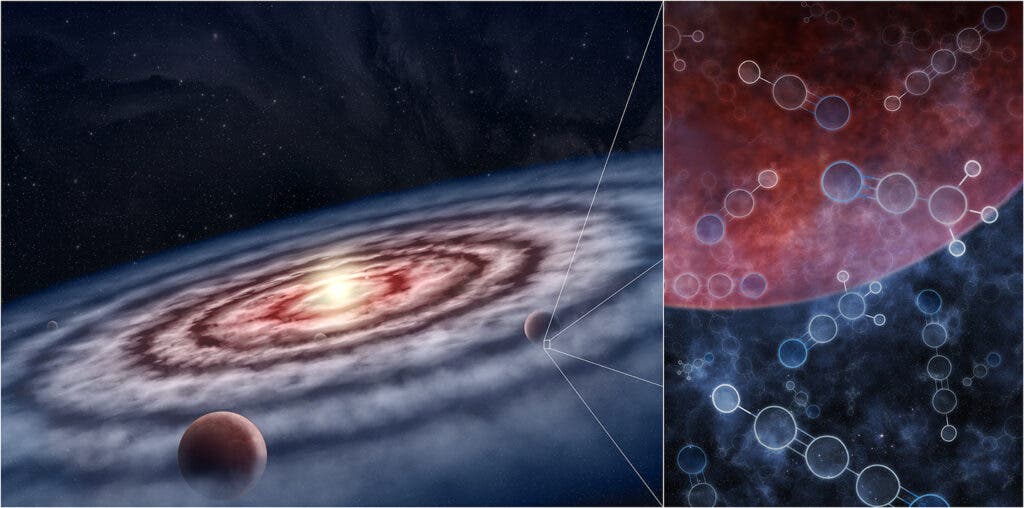A group of astronomers at the University of Leeds have identified rich reservoirs of life-giving molecules around young stars in our galaxy — which was previously believed to happen only under rare circumstances. The findings suggest that there could be as much as 100 times more of these molecules in the Milky Way than previously thought.

The researchers published a set of papers in which they detail the discovery of the molecules around disks of gas and dust particles, orbiting around stars. These disks are formed simultaneously with the stars and can eventually form planets. Such as it happened with the disc near the Sun that formed the planets of the Solar Systems.
“These planet-forming disks are teeming with organic molecules, some which are implicated in the origins of life here on Earth,” Kartin Öberg, one of the authors, said in a statement. “This is really exciting. The chemicals in each disk will ultimately affect the type of planets that form and determine whether or not the planets can host life.”
The researchers used the Atacama Large Millimetre/submillimetre Array (or ALMA) radio telescope in Chile to look at the composition of the five discs. ALMA can detect even the weakest signals from molecules in outer space thanks to its 60 antennas. Each molecule emits a light at a different wavelength that scientists can investigate.
The researchers looked for certain organic molecules and found them in four of the five disks, and in much larger numbers than they originally anticipated. These molecules are considered essential to life on Earth. They are believed to have reached the planet through asteroids or comets that crashed into Earth billions of years ago.
The theory of the molecules traveling in asteroids and comets was reaffirmed here, as they were located in the same region that produces space rocks. They weren’t evenly distributed in the discs, with each containing a different mix of molecules. For the researchers, this shows that each planet is created based on a different mix of ingredients.
“ALMA has allowed us to look for these molecules in the innermost regions of these disks, on size scales similar to our Solar System, for the first time. Our analysis shows that the molecules are primarily located in these inner regions with abundances between 10 and 100 times higher than models had predicted,” John Ilee, one of the authors, said in a statement.
The researchers specifically looked for three molecules, cyanoacetylene (HC3N), acetonitrile (CH3CN), and cyclopropenylidene (c-C3H2), in five protoplanetary disks, known as IM Lup, GM Aur, AS 209, HD 163296, and MWC 480. The discs were found 300 to 500 lights years from Earth, with each of them showing signals of on-going planet formation.
The next steps
Following this remarkable discovery, the researchers want to keep on searching for more complex molecules in the protoplanetary disks. They are specifically looking forward to the launch of the James Webb Telescope, so far scheduled for December 18th, as it will help to examine the molecules in much greater detail than before, they added.
“If we are finding molecules like these in such large abundances, our current understanding of interstellar chemistry suggests even more complex molecules should also be observable,” Ilee said in a statement. “If we detect them, then we’ll be even closer to understanding how the raw ingredients of life can be assembled around other stars.”
All the studies related to this finding can be accessed here.


